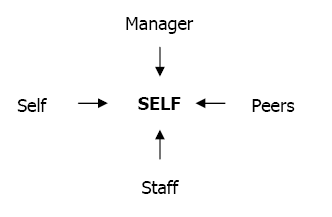Take Remedial Action To Resolve Resource Deficiencies

It is the supervisor/manager’s role to ensure that employees have all the necessary resources to enable them to perform optimally in their job. An employee cannot be held responsible for poor performance if resources like materials, equipment and tools are detracting from work performance.
Once the performance management cycle has been completed you will have received a lot of information on resource deficiencies.
- Summarise feedback on resources deficiencies in a summary report.
- Identify what action you can take to resolve difficulties and remove barriers.
- Escalate issues that you cannot resolve to your manager and follow-up to ensure that action is taken.
- Give feedback to the staff member, indicating which issues you have personally taken responsibility to resolve and which issues you have escalated to a higher level.
- Provide feedback on an ongoing basis until all matters have been resolved in one way or another.
Reach Agreement On Remedial Actions
Once performance gaps have been identified and agreed upon, an action plan must be put in place to ensure that remedial action will be taken to bring behaviour and work outputs to required standards.
Consider the following procedure:
- Ensure that the action plan put together addresses all the areas that do not meet the performance standard.
- An action plan should be specific, clear and to the point. There should be no misunderstandings.
- Specific action that needs to be taken by the employee and supervisor/manager must be identified and both parties must be clear on their objectives.
- Establish follow-up dates to review performance on a regular basis.
- Acknowledge and celebrate successes. This will motivate the staff member and enhance self-esteem.
- Set a realistic deadline for remedial action. Both supervisor/manager and employee must work towards this deadline to achieve the required performance level.
Reach Agreement on Further Remedial Action

Once the deadline for remedial action has been reached, assess the situation formally.
If performance is still not at the required standard, more drastic steps will have to be implemented.
- Start a formal disciplinary process, which is independent from the action plan and performance counselling process.
- Make sure that meeting is thoroughly recorded and that you include observers.
- Ensure that the employee understand that a failure to meet performance objectives stated in the remedial action plan will lead to disciplinary action and possible dismissal for incapacity (poor performance).
Obtain And Consider Feedback From Staff Members.
It is important to obtain and consider feedback from staff members with regards to your skills as a performance management facilitator for three reasons:
- It gives staff members the opportunity to realise, that just like them, you also have performance and development objectives and targets. And that you value their input on the development and refinement of your own skills.
- It gives you the opportunity to get feedback on your skills as performance facilitator, to identify strengths and weakness and to improve and grow where necessary.
- It also provides you with the opportunity to assess the performance management system and make adjustments and improvements where necessary.
For the purposes of performance management, the performance of people at work can be divided into two components:
- Functional performance (e.g. budget results, sales level, project completion).
- Behavioural performance (e.g. Leadership capability, reliability, communications skills).
For the purposes of performance management, we are only interested in behavioural performance. The 360-degree feedback process is therefore a powerful tool to implement within the performance management environment. It will give you the opportunity to look at your own performance as a performance management facilitator from all angles. The 360-degree feedback process can however only be used for behavioural aspects of performance. These are the ones everybody (self, peers, managers and staff) can see and comment on. (See annexure 1 for more details.)
Only managers and people, who have staff reporting to them, can use the 360-degree feedback (90 degrees of feedback from each of ‘self’, ‘staff’, ‘peers’ and ‘manager’).

Click here to download what the 360-degree feedback process is.
Click here to download the major pitfalls in performance management and how to avoid them.